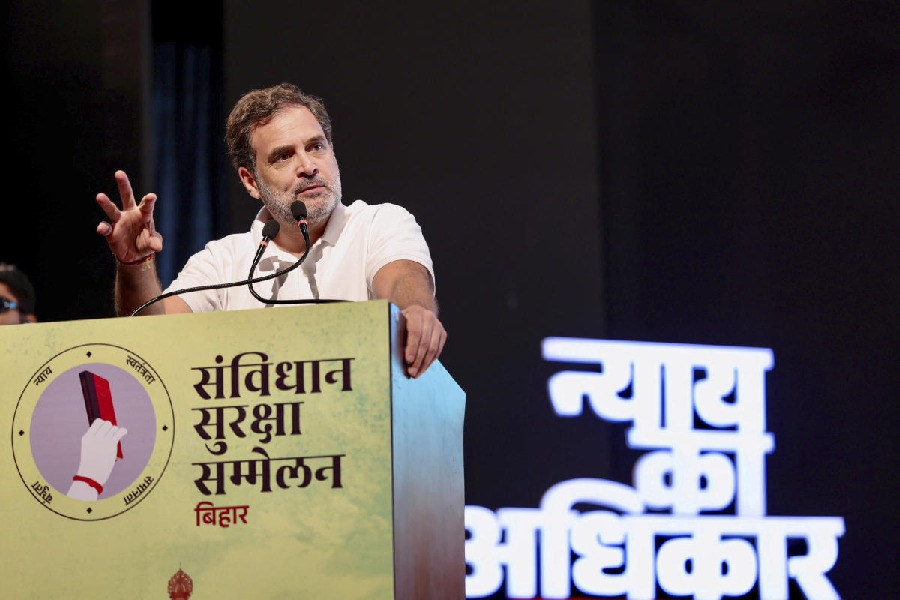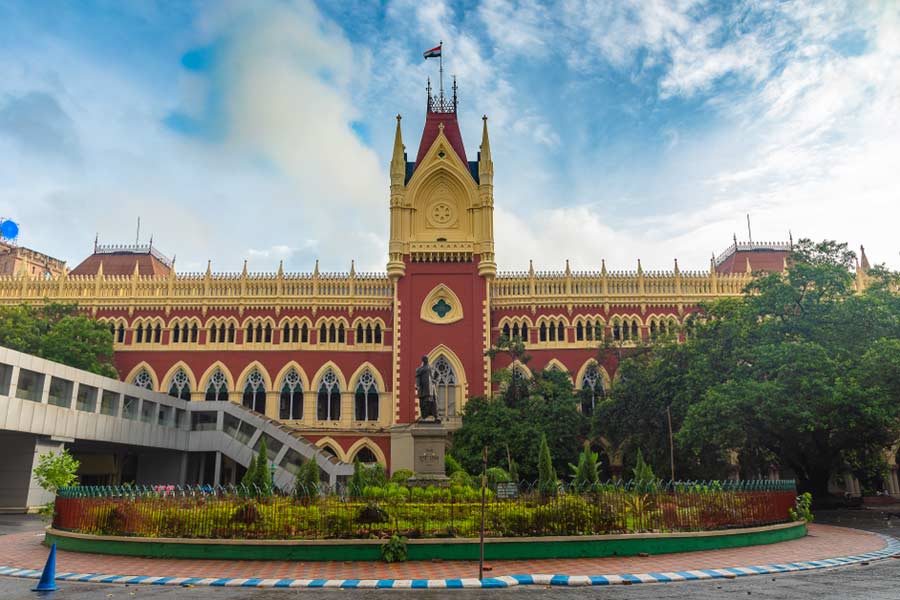 |
 |
 |
| Policemen stand guard at various spots on the Shakti Mills compound, parts of which were cordoned off on Friday. (AFP) |
Mumbai, Aug. 23: The first four minutes down the main road from Mahalakshmi railway station are a hurly-burly of taxis, tempos, and labourers loading and unloading cargo.
Over the next one minute, as you turn right into the Shakti Mills Lane, the relative quiet is broken only by the clatter of the Western Railway printing press on the right, the hubbub of a dhaba, perhaps an occasional train rattling past unseen.
To the left stand a handmade-paper unit and the godown of corrugated products manufacturer Armstrong Smith Ltd, where labourers are loading and unloading cargo.
Far to the right, the skyline is dominated by the 48-storey, 646ft Lodha Bellissimo in N.M. Joshi Marg whose luxury flats are believed to provide breathtaking views of the Mahalaxmi Racecourse and the Bandra-Worli Sea Link.
Sandwiched between these scenes of bustle and symbols of affluence lies a 10-acre jungle in the heart of the city, whose eerie silence, crumbling ruins and weedy landscape mirror the ambience of a horror film’s setting.
It was here on the compound of the abandoned Shakti Mills that a photojournalist was gang-raped before sundown last evening, with no one the wiser even in the dhaba whose rear wall offers a peeping hole into these desolate grounds that time forgot.
That hole offers one entrance into the mill, which doesn’t have a gate on the lane named after it, the other being a bigger hole in the boundary wall bang opposite the paper unit and godown, its mouth strewn with litter.
Creepers have overrun the stone compound wall in the 31 years since the silk mill closed down. A tiny path cuts through vegetation as tall as two feet, under which lurks danger.
“Be careful; the place is full of snakes,” a local tea vendor warned this correspondent.
Two roofless, double-storey structures rise like medieval ruins inside the walls, bereft of any equipment to remind a visitor that the site once hummed with life and activity. The building at the back, stripped of even its walls, looks like an array of decrepit colonnades and arches.
In the right corner of the front building is a small well, cordoned off by police tape that warns, too late: “Danger. Do not enter.”
Pigeons flutter about. Three cops guard a clearing in the ruins where the crime took place long before summer daylight was extinguished.
Yet Naina Patankar heard nothing in her dhaba abutting the boundary wall that offers lunch and dinner to workers in this industrial neighbourhood.
“At 6.30 last evening, I was right here in the dhaba. I heard absolutely nothing. Only when the police arrived around 9pm did we learn about the gang rape,” she said.
Patankar said that in the evening, the compound turned a den of drinkers, gamblers and drug addicts from the other side of the mill — from across the railway tracks and Dhobi Ghat.
“The kids from a nearby chawl often play cricket on the second-floor terrace during daytime. After 7pm, we are too scared to venture in.”
Mohammed, a mechanic who runs a small garage adjoining the mill’s wall, was in his shop too but heard nothing. He and Patankar don’t remember seeing the victim and her male colleague step into the compound but said the ruins do attract many photographers.
An employee of TranceForme Designs, an antiques and home décor studio further down the lane, said: “We are open till about 7.30-8pm but didn’t notice anything amiss. We were shocked to read the news in the papers. We don’t go to the mill compound.”
The mill’s ownership remains unclear. “All we know is that it went into liquidation around 1982 when Datta Samant organised the textile strike, locking out many mills. Only the Bombay High Court liquidator can identify the exact stakeholders,” said activist Datta Iswalkar, who works with textile mill workers.











